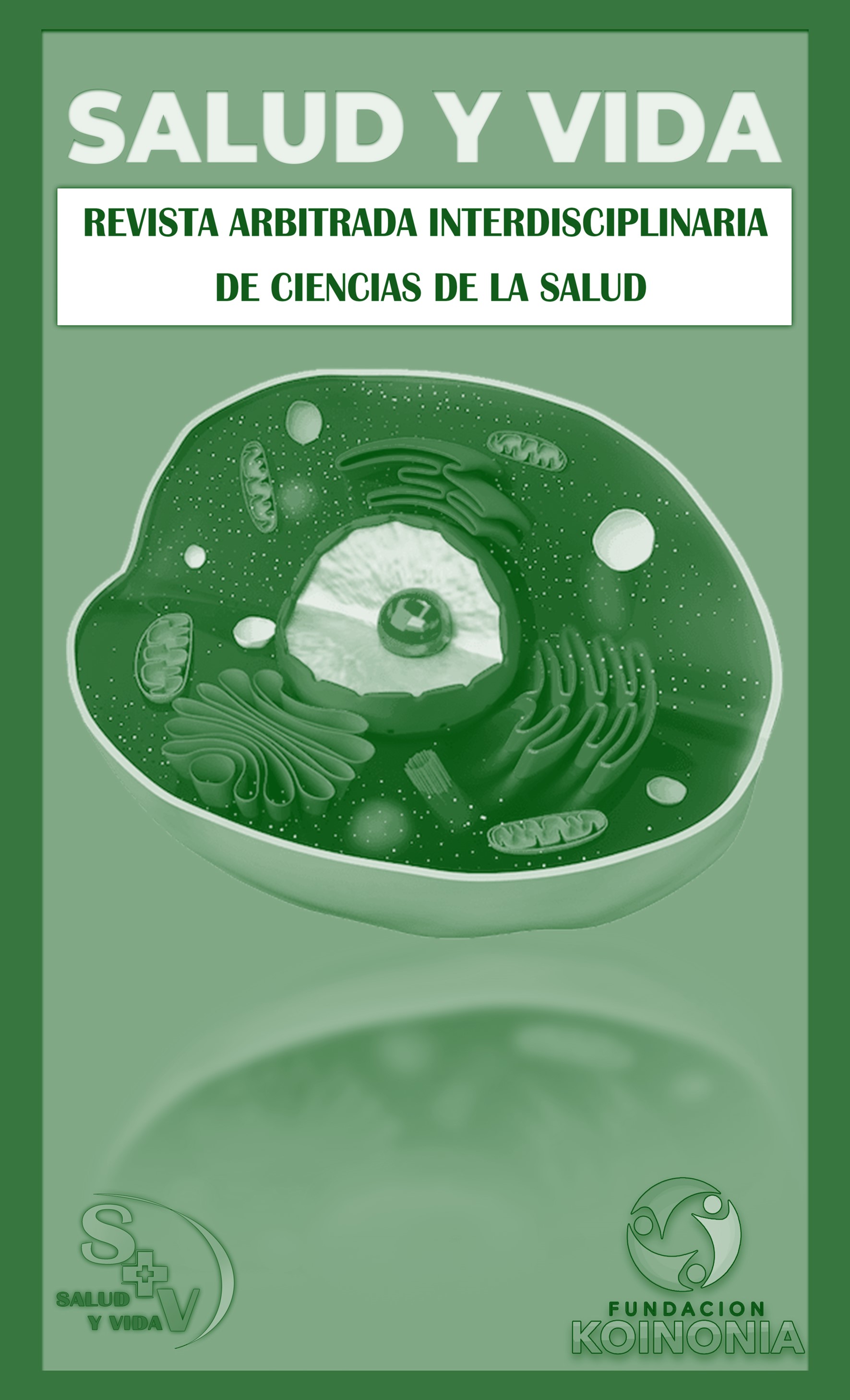Central venous catheter infection in the intensive care unit: literature review
DOI:
https://doi.org/10.35381/s.v.v9i1.4673Keywords:
Central venous catheter, catheter infection, bacteremia, intensive care unit, (Source: DeCS).Abstract
Objectives: To identify the risk factors associated with central venous catheter infection in the intensive care unit through a literature review. Method: Descriptive and retrospective literature review of documents published by scientific societies, research papers, and scientific articles. The Google Scholar, SciELO, PubMed, and Web of Science databases were used with the keywords: central venous catheter, catheter infection, bacteraemia. Results: It was found that infections associated with central venous catheters represent the third leading cause of hospital-acquired infections (14% of all nosocomial infections). The most significant risk factors include: catheter dwell time (especially >5 days), insertion site (right subclavian vein), catheter type (double lumen), contamination at the entry site and connections. The most frequently isolated microorganism was coagulase-negative Staphylococcus. The departments with the highest incidence were the Intensive Care Unit (37.7-80%), followed by Nephrology (74%) and Haematology (66%).
Downloads
References
Vilela R, Jácomo AD, Tresoldi AT. Risk factors for central venous catheter-related infections in pediatric intensive care. Clinics (Sao Paulo). 2007;62(5):537-544.
Randolph AG, Brun-Buisson C, Goldmann D. Identification of central venous catheter-related infections in infants and children. Pediatric Crit Care Med. 2005;17(3 Suppl):S19-S24.
Vaquero SE, Izquierdo GE, Arrizabalaga AM, Gómez PC, Moreno VJM. Incidencia de bacteriemia asociada a catéter en niños hospitalizados que reciben nutrición parenteral. Nutr Hosp. 2011;26(1):236-238.
Rosado V, Romanelli RM, Camargos PA. Risk factors and preventive measures for catheter-related bloodstream infections. J Pediatr (Rio J). 2011;87(6):469-477.
Ferrer EA, Macías GE, Meza CJ, Cabrera JR, Rodríguez WF, Díaz GE, et al. Infecciones relacionadas con catéteres venosos: incidencia y otros factores. Med Int Mex. 2008;24(2):112-119.
Mermel LA, Allon M, Bouza E, Craven DE, Flynn P, O'Grady NP, et al. Clinical practice guidelines for the diagnosis and management of intravascular catheter-related infection: 2009 Update by the Infectious Diseases Society of America. Clin Infect Dis. 2009;49(1):1-45.
Pascual A, Bouza E, Liñares J. Diagnóstico microbiológico de las infecciones asociadas a catéteres intravasculares. Procedimientos en Microbiología Clínica. SEIMC 2004. ISBN: 84-609-2290-1.
Vanholder R, Canaud B, Fluck R, Jadoul M, Labriola L, Marti-Monros A, et al. Catheter-related blood stream infections (CBRSI): a European view. Nephrol Dial Transplant. 2010;25(6):1753-1756.
Londoño Á, Ardila M, Ossa D. Epidemiología de la infección asociada a catéter venoso central. Rev Chil Pediatr. 2011;82(6):493-501.
O'Grady NP, Alexander M, Burns LA, Dellinger P, Garland J, Heard SO, et al. Guidelines for the prevention of Intravascular Catheter-Related Infection. Centers for Disease Control and Prevention and Healthcare Infection Control Practices Advisory Committee; 2011.
Rodarte P, Zuno J, Alcántara G. Factores de riesgo asociados a infección de catéter venoso central. Arch Inv Mat Inf. 2016;7(3):107-115.
Miguelena D, et al. Complicaciones relacionadas con catéteres venosos centrales en niños críticamente enfermos. Rev Salud Pública. 2013;15(6):916-928.
Mesiano E, Merchán-Hamann E. Infección de corriente sanguínea en pacientes con catéter venosos central en unidades de cuidado intensivo. Rev Latino-Am Enfermagem. 2007;15:453-459.
Seisdedos R, et al. Infecciones relacionadas con el catéter venoso central en pacientes con nutrición parenteral total. Nutr Hosp. 2012;27(3):796-801.
Dorociaki J, et al. Catéteres venosos centrales de segunda generación para prevención de infección de la corriente sanguínea: revisión sistemática. Rev Latino-Am Enfermagem. 2016;24(e2722).
Lona J, et al. Bacteriemia relacionada con catéter venoso central: incidencia y factores de riesgo en un hospital del occidente de México. Bol Med Hosp Infant Mex. 2016;73(2):105-110.
Alonso-Morquecho A, Flores-Preciado H, Martínez-García M. Prevalencia de infección en pacientes con catéter venoso central. Rev Enferm IMSS. 2000;8(3):139-143.
Osuna-Huerta A, Carrasco-Castellanos JA, Borbolla-Sala ME, Díaz-Gómez JM, Pacheco-Gil L. Factores que influyen en el desarrollo de infección relacionada a catéter venoso central y gérmenes relacionados. Salud en Tabasco. 2009;15(2-3):871.
Domínguez Ortega J, Sarango Vivanco R, Sandoya Maza K, Salazar Torres ZK. Infecciones producto de catéter venoso central y factores asociados en neonatos del Hospital José Carrasco Arteaga. Rev Vive. 2021;4(12):634-646.
Zambrano J, Serrano E, Quiroz R. Prevalencia de infección en pacientes con catéter venoso central. Rev Med HJCA. 2013;5(2):120-124.
Telechea H, Menchaca N, Rodríguez M. Incidencia y etiología de la bacteriemia asociada al uso de catéteres venosos centrales en una unidad de cuidados intensivos. Arch Pediatr Urug. 2013;84(3):181-186.
Villamarín B, et al. Bacteremia nosocomial asociada a catéter vascular central en unidades de cuidados intensivos en 2 hospitales en Galicia (España). Infectio. 2016;20(2):62-69.
Ferrer C, Almirante B. Infecciones relacionadas con el uso de los catéteres vasculares. Enferm Infecc Microbiol Clin. 2014;32(2):115-124.
Espiau M, et al. Incidencia de bacteriemia asociada a catéter venoso central en una unidad de cuidados intensivos. An Pediatr (Barc). 2011;75(3):188-193.
Hina H, McDowell J. Minimising central line associated bloodstream infections' (CLABSIs) rate in inserting central venous catheters (CVCs) in the Adult Intensive Care Units (AICUs). J Clin Nurs. 2017;23(5):1456-1464.
Gominet M, Compain F, Beloin C, Lebeaux D. Central venous catheters and biofilms: where do we stand in 2017? APMIS. 2017;125(4):365-375.
Wiatrak B, et al. Vascular System Infections: Characteristics, Risk Factors, Prevention Methods and Economic Impact. Polim Med. 2016;46(1):59-69.
Kramer R, Roger M, Conte M, Mann J. Are antimicrobial peripherally inserted central catheters associated with reduction in central line associated bloodstream infection? A systematic review and meta-analysis. Am J Infect Control. 2017;45(2):108-114.
Cruz RP, Rincón ZJ, Mendieta AGG. Factores de riesgo asociados a infección de catéter venoso central. Arch Inv Mat Inf. 2015;7(3):107-115.
Wiatrak B, Karuga-Kuźniewska E, Staszuk A, Gabryś J, Tadeusiewicz R. Vascular system infections: characteristics, risk factors, prevention methods and economic impact. Polim Med. 2016;46(1):59-69. DOI:10.17219/pim/64696.
Published
How to Cite
Issue
Section
License
Copyright (c) 2025 María Graciela Chimborazo-Llamuca, Elsa Josefina Albornoz-Zamora, Nairovys Gómez-Martínez

This work is licensed under a Creative Commons Attribution-NonCommercial-ShareAlike 4.0 International License.
CC BY-NC-SA : Esta licencia permite a los reutilizadores distribuir, remezclar, adaptar y construir sobre el material en cualquier medio o formato solo con fines no comerciales, y solo siempre y cuando se dé la atribución al creador. Si remezcla, adapta o construye sobre el material, debe licenciar el material modificado bajo términos idénticos.
OAI-PMH: https://fundacionkoinonia.com.ve/ojs/index.php/saludyvida/oai.









